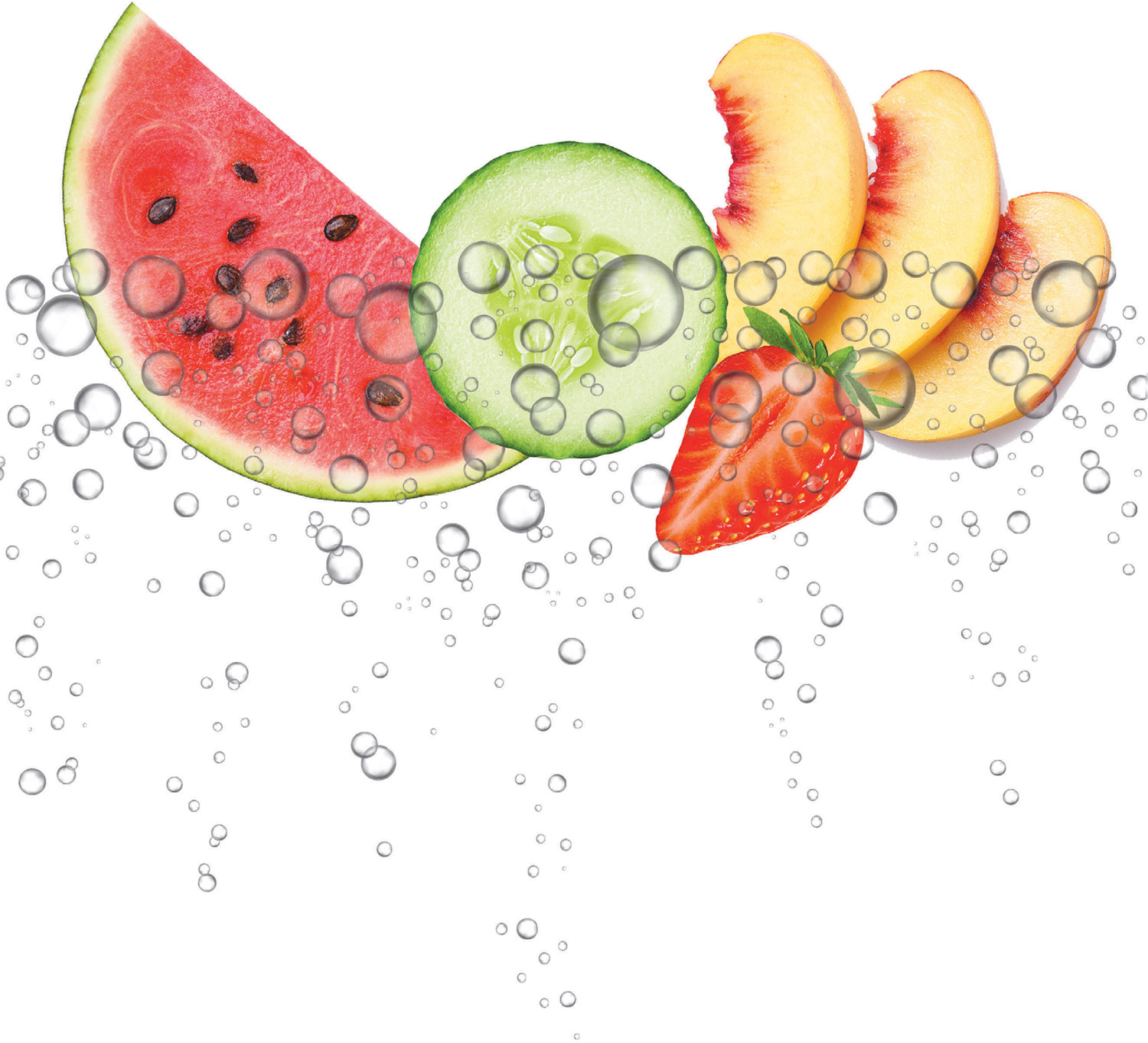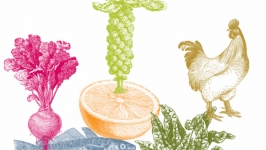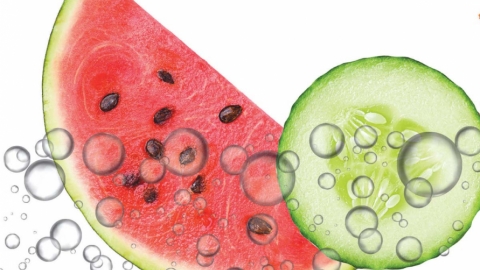Staying Hydrated
As we swelter during the long hot days of summer, we can sometimes find it challenging to stay properly hydrated. While drinking water is the first step to replenishing fluids, consuming foods like fresh fruits and vegetables contributes to our daily needs while providing an added boost of nutrition.
“People don’t realize that 20% of their daily hydration comes from the foods they eat,” says Anthony Dissen, RD, instructor of health sciences at Stockton University in Galloway. “High water foods also tend to be high in fiber, which helps slow down digestion, giving your system more time to absorb moisture as it passes through your small and large intestine,” he says, “which can help water absorb more thoroughly rather than drinking a lot of water all at once.”
While most fruits and vegetables contain a significant amount of water, it’s a welcome truth that the most hydrating are available during the summer months. Vegetables like cucumbers, celery, lettuces, cauliflower, zucchini, and fruit like peaches, nectarines, watermelons, and strawberries are all comprised of about 95% water.
Other foods that hydrate may come as a surprise. “Many whole grains, beans, and lentils absorb water when cooked,” says Dissen. “Combine any of these with some raw or lightly cooked vegetables, and you have a quick and easy hydrating meal.”
Whatever the source, the amount of water needed daily greatly differs from one person to the next.
“PEOPLE WILL OFTEN TURN TO ELECTROLYTE DRINKS, BUT YOU CAN KEEP ELECTROLYTE LEVELS IN CHECK BY INCORPORATING FOODS THAT CONTAIN THEM NATURALLY IN YOUR DAILY DIET.” MANY OF THESE FOODS HAVE THE ADDED BENEFIT OF BEING NATURALLY HYDRATING.
— Jane Schwartz, nutritionist
“Though it’s hard to believe, our bodies are made up of 60— 70% water, which makes you realize why it’s so important to stay hydrated,” says Caryn Alter, RD at CentraState Medical Center in Freehold.
Alter notes that according to the National Institute of Health, the recommended daily intake of water is between 91— 125 fluid ounces for the average adult, which includes fluids from both food and beverage. These guidelines, however, vary based on an individual’s needs.
“It’s no longer about drinking eight glasses of water a day,” she says. “It depends on weight, age, activity level, and any medical conditions one may have.”
Alter advises the easiest way to know if you’re getting enough fluids is simply to pay attention to your urine color. Pale yellow or clear means you’re hydrated, while dark yellow means you’re not.
Other physical symptoms of dehydration include dry skin, feeling dizzy, headaches, fatigue, and nausea. While staying hydrated staves off these effects, so does maintaining a balanced diet.
“Electrolytes are essential minerals found in the foods we eat and include sodium, calcium, potassium, and magnesium,” says Jane Schwartz, RD and nutritionist who owns and operates a private practice in Princeton. “They regulate many systems of the body including muscle contractions, balancing pH levels, controlling nervous system function, and helping regulate water and nutrients inside and outside our cells.”
Schwartz says that electrolytes are lost through sweat and urine, so they’re important to deliberately replace, especially for athletes or for those who work outside in the summer sun.
“People will often turn to electrolyte drinks, but you can keep electrolyte levels in check by incorporating foods that contain them naturally in your daily diet,” she says.
“Most vegetables contain natural sources of sodium, like carrots and celery,” Schwartz explains. “Nuts, seeds, berries, and dark leafy greens are excellent sources of magnesium, while bananas, avocados, legumes, grapefruit, sweet potatoes, and melons like cantaloupe and honeydew are good sources of potassium,” she says. “Plus, summer fruits help keep you cool.”
So as summer heats up, cool down, fuel up, and stay hydrated with your favorite Garden State picks.
Boost your hydration by adding slices of cucumber, watermelon, mint, strawberries, lemon, lime, or pineapple to your water bottle, or try adding them to iced herbal tea for a refreshing treat without the added sugar.
—Caryn Alter, RD at CentraState Medical Center in Freehold
Eat your water with these ultra-hydrating, nutritious whole foods.
Amount of water as percentage of food weight; amount of water in fluid ounces per serving:
LETTUCE
1 cup
95%
1.2 ounces
CELERY
1 medium stalk
95%
1.5 ounces
TOMATO
½ cup
94%
3 ounces
GRAPEFRUIT
½ medium
91%
3.8 ounces
WATERMELON
1 cup
91%
4.9 ounces
BROCCOLI
½ cup
89%
1.4 ounces
CARROTS
½ cup
88%
1.9 ounces
APPLE
1 medium
86%
5.5 ounces
POTATO
baked, with skin
75%
4.6 ounces
RICE, BROWN, COOKED
½ cup
70%
2.5 ounces
Source: US Department of Agriculture, National Nutrient Database for Standard Reference












